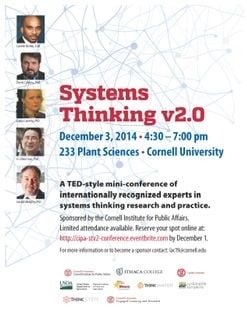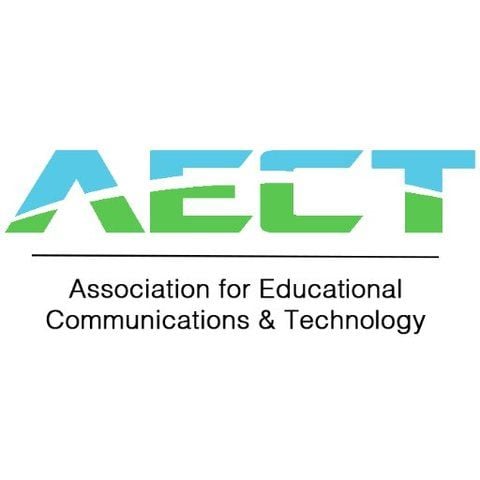EQ Meets IQ
June 11, 2014
The original Dalai Lama and founder of Buddhism, the Hindu Prince Gautama Siddhartha, said, “We are what we think. All that we are arises with our thoughts. With our thoughts, we make the world.”
If our world arises from our thoughts, deeply understanding our thoughts is a way to deeply understand not only the world, but ourselves. In other words, all that we are - for example, compassionate, prosocial, intelligent- is rooted in our thoughts and mental models of the world around us.
As educators and/or parents, our common goal is to develop humans who are knowledge-able. We often call this the “whole child” to develop into a whole adult who is as intelligent emotionally as they are academically. If this is our task in life, then what is our greatest tool to accomplish it? If we follow Siddhartha’s ideas, then our primary leverage point for learning is around our students' thoughts and the process by which they bring meaning to the world through mental models about stuff (school work, their friendships, themselves).
We know that humans BUILD meaning around information to create knowledge. This knowledge is constructed through the interaction of information (content) and the process of thinking. This is true of all knowledge, about anything and everything that is knowable, including math, languages, interpersonal relationships, self esteem, and awareness.
As life progresses, our kids will be exposed to a lot of varied content and situations which will require thinking through to succeed. Because the content changes over time, we need to help them better understand how they are thinking things through. We need to deconstruct how they build meaning that prepares them for an academic test, and a test of life. We need to teach that skill explicitly to them. We know this is how the brain builds knowledge, so the task is really to bring it into our kids' consciousness.
Humans understand things by distinguishing ideas from one another, seeing ideas in a wider systemic context, recognizing the salient relationships in that wider context, and looking at any topic or situation through more than one perspective. These four things are a content agnostic formula for building meaning.
It makes no difference what the content is - state capitals, E=mc2, emotions interrelationships, motivations, behaviors, math problems, human conflicts - all subjects, topics, disciplines. Distinguishing ideas, relating ideas, seeing ideas as part-whole systems, and taking different perspectives are the way we structure information to give it meaning. Whatever the content is that you are exploring, that is the way kids structure it to give it meaning and turn it into knowledge.
When a student understands the process by which they understand things, it is analogous to the idea that we should teach them how to fish rather than provide them with fish. Empowering students with an awareness of their own thinking processes, allows them to fish anywhere for any kind of fish, and as a result, feed themselves for a lifetime. In other words, you are handing them a tool that allows them to understand anything they encounter, not just science or math, but the tools to do well in any and all things in life such as, resolving conflicts, awareness of one’s own destructive behaviors, being able to solve for x in a math equation, and learn a new concept or skill to be better at anything.
The current buzz in education is about developing kids with “grit,” thought of as the combination of perseverance and tenacity in pursuit. The idea of grit was originally researched by Kurt Hahn, a sociologist who later founded Outward Bound, the worlds premier experiential education organization. Hahn’s research found that the men who possessed grit all shared a few mental models such as 1) to care for himself AND others, 2) an experiential understanding that pain, suffering, torment and difficulties are temporary and would pass and 3) that doing things well might take longer but craftsmanship had value, and that it is important to do a good job rather than just finish it. Hahn concluded that grit comes from the collection of mental models built by men who had reflected and learned from experiences. This is why older soldiers outlived younger ones in many battle situations. As a result, Hahn developed a series of programs to relate experiences to reflection to develop these traits in children/adults as the core of Outward Bound.
What we can extrapolate from Hahn’s research is that we learn not by doing or experiencing things, but from reflecting upon that which we have done. And, that reflection is a thought process driven by the process of thinking through the information to bring meaning to the experience.
As teachers, we do not need to create teachable experiences for our students, they happen every day on their own. But what we do need to create is a powerful model of reflection that will bring kids' meaning-making process into their consciousness so they can learn from everything they do. This is what leads to a whole child, who is prepared equally well for tests in school, and the harder tests of life.
For example, distinguishing between one’s thoughts and feelings is core to emotional intelligence and competence. We need to know the difference between the two. We need to allow kids to HAVE their feelings. And then we need to guide kids through reflective thinking about those feelings so they learn from the experience that elicited the emotional response in the first place. This leads to all sorts of desired outcomes - compassion, empathy, and self-awareness.
So, when asked, how do we develop both mastery of content, strong character, and even mastery of self all at once? The answer is, we do this by teaching kids that distinguishing ideas, relating ideas, seeing ideas as part-whole systems, and taking different perspectives on ideas are the way we structure information to give it meaning. It is the process of how we structure our thinking about anything, math, science, personal relations, and knowledge of self.
1.In math, we distinguish between an expression and an equation. In character education, we distinguish between thoughts and feelings. In science, we distinguish between solids, liquids and gases. In adolescent development, we distinguish between risk behaviors and others.
2.In math, we learn the difference between an equation and an expression by seeing the equal sign as the part of an equation that differ from an expression. In character education, we see that there are 9 emotions and infinite thoughts. In Science, we recognize states of matter, an important art of understanding the world around us. In adolescent development, we teach kids that they are part of a larger system around them, that they impact others around them with their choices.
3.Throughout a child's life, we relate wars and distinguish the difference between them to better understand them. We look for similarities among literary works. We try to reach adolescents the related natural consequences to bad behaviors.
4.We understand wars by looking at each party’s perspective (North/South, American/Vietnamese). We understand geology through the perspective of hardness, cleavage, luster. In character education, we teach that we all have a perspective that shapes our behavior and that we must be able to see others' perspective to resolve conflicts.
The current dialogue in education falsely splits the skills of students into two categories: academic and social. I contend that they need one skill for both: thinking, or more specifically meta-thinking... the awareness of their own thought processes such that they can tackle any topic and meet any challenge they face.
.png?width=150&height=150&name=CRL%20GOAT%20Logo%20(4).png)


